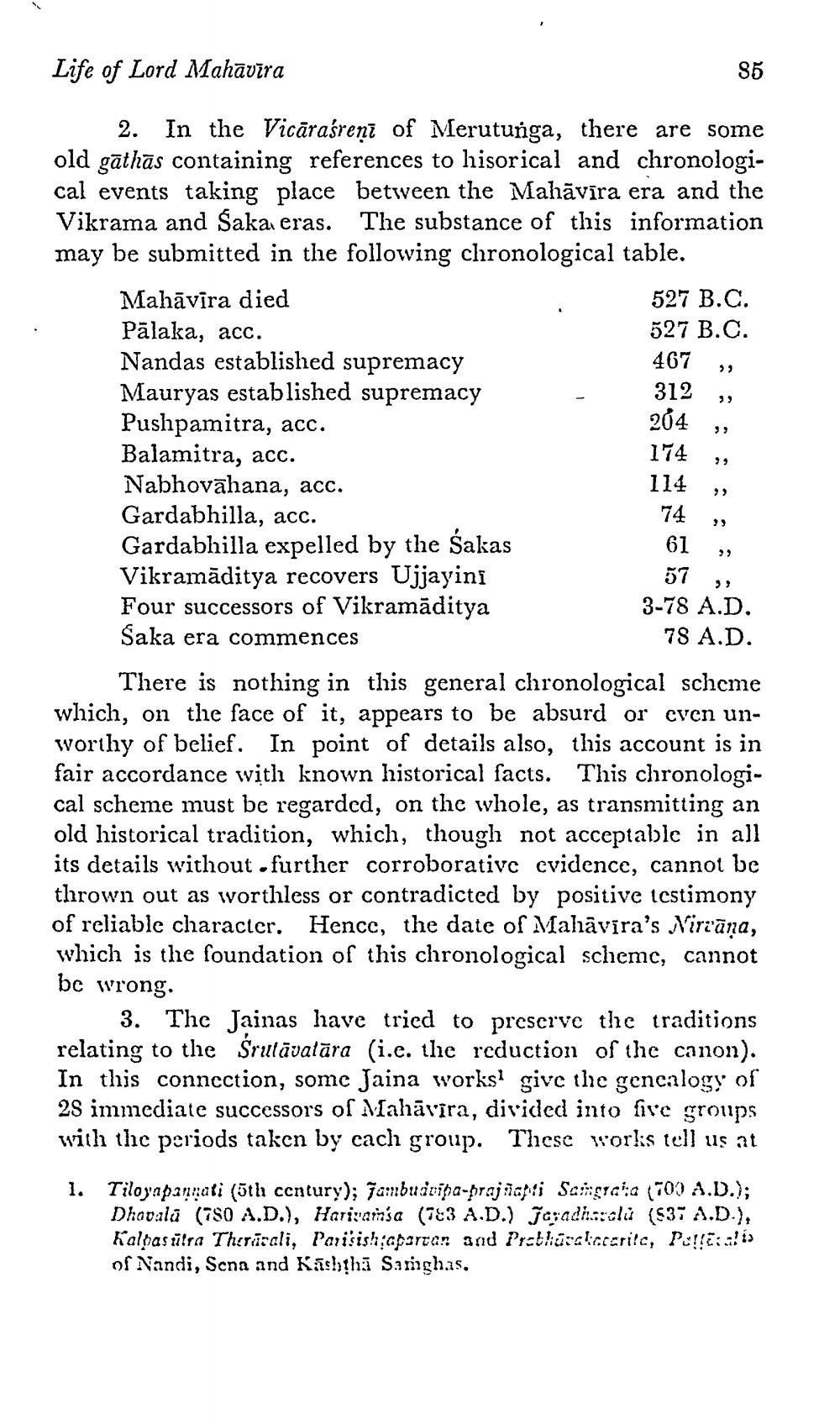________________
Life of Lord Mahāvīra
85
904
61 ,
57
2. In the Vicāraśreni of Merutunga, there are some old gāthas containing references to hisorical and chronological events taking place between the Mahāvīra era and the Vikrama and Saka eras. The substance of this information may be submitted in the following chronological table. Mahāvīra died
527 B.C. Pālaka, acc.
527 B.C. Nandas established supremacy
467 Mauryas established supremacy
312 Pushpamitra, acc. Balamitra, acc.
174 Nabhovahana, acc.
114 Gardabhilla, acc. Gardabhilla expelled by the sakas Vikramāditya recovers Ujjayini Four successors of Vikramāditya
3-78 A.D. Saka era commences
78 A.D. There is nothing in this general chronological scheme which, on the face of it, appears to be absurd or cven unworthy of belief. In point of details also, this account is in fair accordance with known historical facts. This chronological scheme must be regarded, on the whole, as transmitting an old historical tradition, which, though not acceptable in all its details without .further corroborative evidence, cannot be thrown out as worthless or contradicted by positive testimony of reliable character. Hence, the date of Mahāvira's Nirzāņa, which is the foundation of this chronological schemc, cannot be wrong.
3. The Jainas have tried to preserve the traditions relating to the Srutāvatāra (i.e. the reduction of the canon). In this connection, some Jaina workså give the genealogy of 28 immediate successors of Mahāvīra, divided into five groups with the periods taken by cach group. These works tell us at
1.
Tiloyapannati (5th century); Jambudrina-brajiapii Sangra'a (700 A.D.); Dhooala (750 A.D.), Hariran'a (783 A.D.) Ja;adiacali (537 A.D.), Kalbastra Thericali, Parisishiafartal and Problutalocarilc, Pu!!:alis of Nandi, Scna and Kashtha Samghas.




